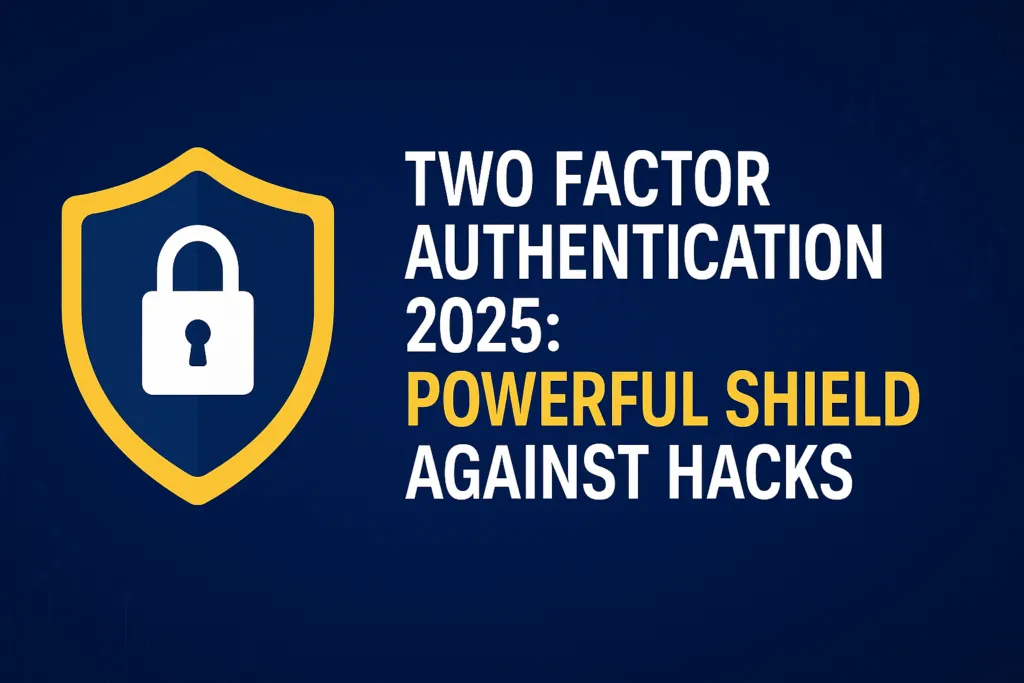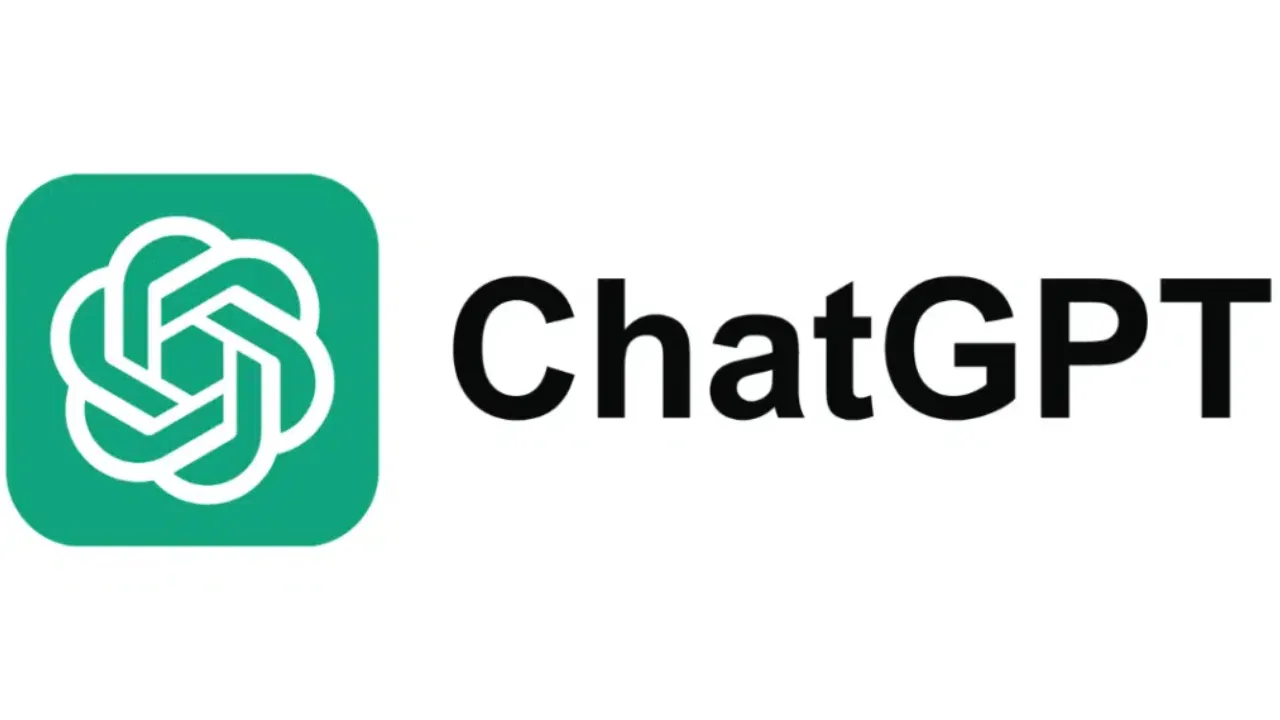Introduction – What is Two-Factor Authentication (2FA)?
In today’s digital world, where cyber threats are increasing rapidly, protecting online accounts has become more important than ever. Strong passwords are no longer enough. Hackers now use advanced techniques like phishing, credential stuffing, and brute force attacks to break into accounts. This is where two factor authentication becomes essential.
Two factor authentication is a security process that requires users to verify their identity through two separate methods before accessing an account. Instead of relying only on a password, two factor authentication adds a second layer of protection. This could be a unique code sent to your phone, a biometric scan like fingerprint or face ID, or a prompt through an authenticator app.
The main goal of two factor authentication is to make it harder for attackers to gain unauthorized access, even if they manage to steal your password. Since it requires something you know (your password) and something you have (your phone or device), it greatly reduces the chances of your account being compromised.
Most major platforms like Google, Facebook, Instagram, and banking apps now offer two factor authentication as an optional feature, but many users still ignore it. This simple extra step could be the difference between staying secure and losing control of your sensitive data.
As cybercriminals continue to target weakly protected accounts, it is no longer just a recommendation but a necessity to use two factor authentication. Whether you are a regular user or a business owner, enabling this security feature is one of the smartest things you can do to safeguard your digital presence.
In the following sections, we will explore how it works, the different types available, and why enabling two factor authentication is crucial for your online safety.
How 2FA Works: The Basics Explained
Two factor authentication works by adding an extra step to the login process. Instead of just entering a username and password, users are also required to verify their identity through a second factor. This additional step ensures that even if someone steals your password, they still can’t access your account without the second piece of information.
The process of two factor authentication typically follows a simple pattern. First, you enter your usual login credentials. Once they are verified, the system prompts you to complete a second step to confirm it’s really you. This second step can vary depending on the method chosen. It may include a one-time password (OTP) sent to your mobile number, a code generated by an authenticator app, a fingerprint scan, or even a face recognition check.
Each of these second steps belongs to a different category of authentication factors. The first factor is something you know, like a password or PIN. The second factor is something you have, such as a phone or a security token. Some systems also use a third category — something you are — which includes biometrics like fingerprints or facial patterns.
This multi-layered approach makes it significantly harder for unauthorized users to gain access. Even if a cybercriminal manages to guess or steal your password, they would still need access to your second factor to break in — something that is not easy to duplicate or hack remotely.
Two factor authentication is designed to make digital access safer by ensuring that account verification depends on more than just one method. The extra step may take a few seconds, but it drastically improves your online security and prevents data theft, account hijacking, and identity fraud.
Types of Two-Factor Authentication Methods
Two factor authentication can be implemented in various ways depending on your security needs. Below are the most common types, each with its own features, benefits, and limitations.
• SMS-Based Authentication
This is the most familiar and widely used form of two factor authentication, especially for beginners.
- Sends a one-time password (OTP) to your mobile phone via SMS.
- You must enter this code within a time limit to verify your login.
- Advantages:
- Easy to use and requires no extra setup.
- Works on all mobile phones, no apps needed.
- Limitations:
- Vulnerable to SIM-swapping and SMS interception.
- Depends on mobile network availability.
• App-Based Authentication (e.g., Google Authenticator, Authy)
This method uses a mobile app to generate time-based codes for secure logins.
- Apps generate a new code every 30 seconds, even without internet.
- Common apps include Google Authenticator, Authy, Microsoft Authenticator.
- Advantages:
- More secure than SMS-based codes.
- Resistant to SIM-swapping and phishing attacks.
- Works offline.
- Limitations:
- Requires smartphone access.
- If phone is lost and not backed up, you may lose access.
• Hardware Tokens
A physical device used to generate or deliver your second authentication factor.
- Can be a key fob or USB device like YubiKey or RSA SecurID.
- Generates one-time codes or plugs directly into a USB port for instant verification.
- Advantages:
- Extremely secure, not reliant on network or apps.
- Ideal for high-security or enterprise use.
- Limitations:
- Expensive for personal use.
- Risk of losing the physical device.
• Biometric Authentication
This method uses your physical traits for verification.
- Can include fingerprint scanning, facial recognition, iris scan, or voice recognition.
- Common in smartphones, laptops, and secure work environments.
- Advantages:
- Fast, convenient, and personalized.
- Difficult to replicate, enhancing security.
- Limitations:
- Some privacy concerns regarding biometric data storage.
- Can fail in poor lighting or damaged sensors.
Why You Must Enable Two-Factor Authentication Today
In an age where cybercrimes are rising rapidly, relying on just a username and password is no longer enough. Two factor authentication has become a critical security measure for anyone who values their digital privacy. Here’s why enabling it today is more important than ever.
• Protection Against Password Breaches
Even the strongest passwords can be compromised. Data breaches from popular websites often expose millions of user credentials, and hackers use these leaked details to break into accounts. Once your password is out in the open, your account becomes an easy target. By enabling two factor authentication, you add a second security checkpoint that blocks unauthorized access even if your password gets leaked. This extra step acts as a powerful barrier and protects your personal information from falling into the wrong hands.
• Defense Against Phishing Attacks
Phishing remains one of the most common tactics used by cybercriminals. They trick users into entering their login details on fake websites that look identical to real ones. Once your credentials are stolen, the attacker tries to log in immediately. But if you have two factor authentication enabled, the login attempt will fail without the second verification factor, such as an OTP or an app-generated code. This reduces the success rate of phishing attacks drastically and provides a strong shield against scams.
• Extra Layer of Security for Sensitive Accounts
Your email, social media, cloud storage, and banking apps contain sensitive data that can be misused if compromised. Two factor authentication adds an extra layer of protection for these accounts. It ensures that only you—someone with access to your device or biometric data—can complete the login process. This added layer of defense is especially crucial for people handling confidential data or managing business accounts.
Which Accounts Should Have 2FA Enabled?
Two factor authentication is a powerful defense mechanism, but it’s only effective when applied where it matters the most. Not all online accounts carry the same level of risk, but certain accounts contain highly sensitive personal, financial, or professional data. Here’s a breakdown of the key types of accounts where enabling two factor authentication is not optional—it’s essential.
• Email Accounts
Your email account is often the gateway to everything else online. Password reset links for social media, banking, e-commerce, and nearly all services are sent to your email. If someone gains access to your inbox, they can reset passwords, impersonate you, or even gain full control of your other accounts.
- Enable two factor authentication on services like Gmail, Outlook, and Yahoo.
- Use app-based authentication (like Google Authenticator) instead of SMS for better security.
- Treat your email account as your most valuable digital asset—it deserves strong protection.
• Banking & Payment Services
Financial platforms are the most attractive targets for hackers. If someone gets into your banking or payment apps, they can drain your funds, make unauthorized transactions, or steal critical identity details.
- Secure your net banking, UPI apps (like PhonePe, Paytm, Google Pay), and wallets using two factor authentication.
- Most banking apps already offer it—ensure it’s enabled in your account settings.
- Use biometric login features (like fingerprint or face unlock) wherever supported, along with a strong PIN or password.
• Social Media & Communication Apps
Hacked social media accounts can lead to identity theft, reputation damage, and privacy invasion. Attackers often use these platforms to scam others, spread malware, or blackmail users.
- Platforms like Facebook, Instagram, Twitter (X), and WhatsApp support two factor authentication.
- Enable it to prevent unauthorized logins, especially if you use these apps for business or public profiles.
- Use app-based or in-app authentication methods for better control and reliability.
• Cloud Storage Platforms
Services like Google Drive, Dropbox, iCloud, and OneDrive hold sensitive documents, photos, backups, and work files. A breach here can result in massive data loss or exposure.
- Two factor authentication is crucial to keep your stored files safe from unauthorized access.
- Many users sync mobile data and backups automatically—securing your cloud storage helps prevent access to personal information even if your device is lost or stolen.
- Always review connected devices and sessions regularly, and sign out from any suspicious access.
Enabling two factor authentication on these critical accounts significantly reduces your chances of becoming a victim of cybercrime. While it might seem like an extra step, it adds a solid layer of defense that passwords alone cannot provide. Start by securing your most important accounts first, then gradually enable it across all platforms where it’s available.
How to Set Up 2FA on Popular Platforms
Enabling two factor authentication on major platforms is a simple yet powerful step to protect your accounts from unauthorized access. Most popular services offer built-in options to set it up quickly. Here’s how to enable two factor authentication on some of the most widely used platforms.
• Google Account
Your Google account controls Gmail, Drive, Photos, and more. Securing it with two factor authentication is critical.
- Go to myaccount.google.com/security
- Under the “Signing in to Google” section, click 2-Step Verification
- Click Get Started and sign in to your account
- Choose your second factor:
- OTP via SMS or call
- Google Prompt via your phone
- Google Authenticator app
- Follow the on-screen instructions to complete setup
Google also offers backup codes and hardware security keys for advanced users. You can manage all trusted devices and recovery options from the same page. Go to Google’s 2-Step Verification setup guide to start the process.
• Facebook / Instagram
Both Facebook and Instagram have built-in two factor authentication options that are easy to activate.
For Facebook:
- Go to Settings & Privacy > Settings > Security and Login
- Under Two-Factor Authentication, click Edit
- Choose your method:
- Authentication app (recommended)
- Text message (SMS)
- Follow instructions to complete setup
For Instagram:
- Open the app and go to Settings > Privacy and Security > Two-Factor Authentication
- Choose your preferred method:
- Authentication app
- Text message
- Confirm using the verification code sent to your method of choice
It’s best to use an authenticator app instead of SMS for better security.
• Paytm / UPI Apps
Payment apps require special protection due to financial risks. Many UPI apps already have built-in device binding and PIN protection, but two factor authentication adds another shield.
For Paytm:
- Open Paytm app
- Go to Profile > Security Settings
- Enable App Lock and Two-Step Authentication
- Use device fingerprint or face unlock for quick verification
Other apps like PhonePe, Google Pay, and BHIM rely on:
- SIM-based device binding
- UPI PIN entry
- Biometrics (if enabled)
Ensure that your mobile number is secured and SIM isn’t easily accessible to others.
• WordPress & Hosting Accounts
WordPress and web hosting accounts store website content and databases, making them prime targets for hackers. Use plugins or built-in tools to enable two factor authentication.
For WordPress:
- Install a plugin like Google Authenticator, Two Factor, or WP 2FA
- Activate it from the WordPress dashboard
- Scan the QR code with your authenticator app
- Save backup codes in a safe place
For Hosting Accounts (e.g., Bluehost, SiteGround, Hostinger):
- Log in to your hosting account
- Go to Account Settings > Security
- Enable Two Factor Authentication
- Use SMS or Authenticator app based on what’s supported
Securing your website admin access prevents data leaks, defacement, and brute-force attacks.
Common Myths About 2FA Debunked
Despite being one of the most effective ways to protect your online accounts, two factor authentication is still surrounded by confusion and myths. These misconceptions often prevent users from enabling it, leaving their accounts vulnerable. Let’s clear up some of the most common myths about two factor authentication.
• Myth 1: “If I Have a Strong Password, I Don’t Need 2FA”
A strong password is essential, but it’s not enough on its own. Passwords can be stolen through data breaches, phishing scams, or malware. Two factor authentication adds an extra verification layer, making it nearly impossible for someone to access your account using only your password.
• Myth 2: “2FA Is Too Complicated to Use”
Many users believe that enabling and using two factor authentication is technical and time-consuming. In reality, most platforms offer simple step-by-step instructions, and once set up, it takes only a few seconds to enter a code or approve a login request. The added security is well worth the minor effort.
• Myth 3: “I’ll Get Locked Out If I Lose My Phone”
While it’s true that your phone plays a central role in two factor authentication, all reputable services offer backup options. These include recovery codes, email recovery, secondary devices, or hardware keys. As long as you store your backup methods safely, losing your phone won’t mean losing your account access.
• Myth 4: “Hackers Can Still Bypass 2FA”
No security system is 100% foolproof, but two factor authentication significantly reduces the risk. Most cybercriminals look for easy targets—accounts without any second layer of protection. When 2FA is enabled, the complexity of breaching your account increases dramatically, making you a much harder target.
What If You Lose Access to Your 2FA Device?
Losing access to your two factor authentication device, such as your phone, can feel like being locked out of everything. But fortunately, most platforms offer secure recovery options to help you regain access without compromising your account’s safety. Here’s what you need to know.
• Backup Codes & Recovery Options
When setting up two factor authentication, many platforms provide backup codes. These are one-time-use codes that can be entered instead of the regular verification method if you lose your device.
- Backup codes are usually shown once during setup, with the option to download or print them.
- Store these codes securely—in a password manager, offline document, or secure vault.
- Use them to log in when your phone is lost, stolen, or not working.
Besides backup codes, some platforms also allow you to set up alternative recovery methods like secondary email addresses or linked phone numbers. These can be used to verify your identity and reset your 2FA settings in emergencies.
• Trusted Devices and Email Recovery
Many services let you mark specific devices—like your home laptop or work computer—as trusted. These devices can log in without requiring the second step each time. If you lose your main device, logging in from a trusted device can help you disable or reset your two factor authentication settings.
In some cases, you can also receive recovery links or verification prompts through your registered email address. This method may involve identity verification, such as confirming account activity or answering security questions.
To stay prepared, it’s always a good idea to:
- Set up backup codes when enabling 2FA
- Add a recovery email and phone number
- Keep at least one trusted device logged in (if possible)
Proper planning ensures that even if your device is lost, your account access is not.
Best Practices for Using Two-Factor Authentication
Enabling two factor authentication is a smart step toward protecting your digital identity, but using it correctly is just as important. To get the most out of this security feature, follow these best practices and ensure your accounts remain safe and accessible at all times.
• Use an Authenticator App Instead of SMS
While SMS-based two factor authentication is better than nothing, it’s not the most secure method. SIM-swapping attacks and message interception can compromise your codes. Instead, use an authenticator app like Google Authenticator, Authy, or Microsoft Authenticator. These apps work offline, rotate codes every few seconds, and are harder for attackers to intercept.
• Save Your Backup Codes in a Safe Place
Most platforms give you backup codes during the setup process. These codes are your safety net if you lose your phone or can’t access your authenticator app. Store them in a secure location, such as a password manager, offline document, or encrypted file. Never share them or save them in unsecured text files.
• Enable 2FA on All Important Accounts
Don’t limit two factor authentication to just your email or social media. Apply it to banking apps, cloud storage, e-commerce platforms, web hosting accounts, and anywhere sensitive data is stored. The more accounts protected, the harder it is for attackers to breach your digital life.
• Keep Recovery Options Updated
Regularly check that your recovery phone number and email address are accurate and accessible. These details are used during account recovery, and outdated info can block you from regaining access.
• Don’t Reuse Authenticator Apps on Multiple Devices Without Backup
If you change phones, always transfer your 2FA settings properly. Failing to do this may result in lockout. Use backup codes or apps that support cloud sync (like Authy) for smoother migration.
Following these best practices ensures two factor authentication truly works to your advantage.
Conclusion – Stay One Step Ahead of Hackers
Cybersecurity is no longer optional. With increasing threats like phishing, data breaches, and identity theft, protecting your online accounts has become more critical than ever. Relying only on strong passwords is not enough in today’s digital landscape. That’s why two factor authentication is one of the most effective ways to add an extra layer of defense.
By requiring a second form of verification, two factor authentication makes it significantly harder for unauthorized users to access your personal and financial information. Even if your password is stolen, your account remains safe behind another gate—whether that’s a time-based code, biometric scan, or security token.
The good news is that enabling two factor authentication is simple. Whether you’re securing your Google account, social media profiles, or banking apps, the process only takes a few minutes. And once it’s set up, it barely affects your daily usage while massively improving your security posture.
As we’ve explored in this guide, there are multiple types of two factor authentication methods, recovery options in case you lose access, and best practices to follow. Start by protecting your most critical accounts—email, banking, and cloud storage—and then expand from there.
Hackers often target easy victims—users with weak passwords and no extra protection. By using two factor authentication, you take a proactive step that puts you ahead of most online threats. It’s a small habit with a big impact.
Don’t wait for a security breach to take action. Enable two factor authentication today and stay one step ahead of hackers, scams, and digital theft. It’s one of the smartest, simplest, and most effective moves you can make to protect your digital life.
Also Read: Kids and Smartphones in 2025 – How Much is Too Much? (Shocking)
FAQs – Two Factor Authentication (2FA)
Q1. What is two factor authentication and why is it important?
Two factor authentication is a security method that requires users to provide two forms of identification when logging into an account. It adds an extra layer of protection and helps prevent unauthorized access, even if your password is stolen.
Q2. How does two factor authentication work?
After entering your password, you’re asked to confirm your identity using a second factor like an OTP (one-time password), fingerprint, or an authentication app code. This ensures that only you can access your account.
Q3. Is SMS-based two factor authentication safe?
SMS-based 2FA is better than no protection at all, but it’s not the most secure. It can be vulnerable to SIM-swapping and interception. Using an authenticator app or biometric verification is recommended for higher security.
Q4. What are the best apps for two factor authentication?
Popular and reliable 2FA apps include Google Authenticator, Microsoft Authenticator, Authy, and Duo Mobile. These apps generate time-based codes that work even without an internet connection.
Q5. What should I do if I lose access to my 2FA device?
If you lose your phone or device, you can regain access using backup codes, recovery emails, or trusted devices (if set up). It’s crucial to save your backup options in a secure location during 2FA setup.
Q6. Which accounts should I secure with two factor authentication?
You should enable 2FA on your email, banking apps, social media accounts, cloud storage, and any platform where personal or financial data is stored.













